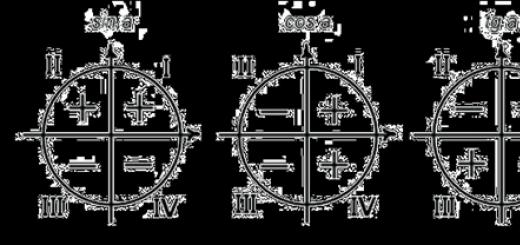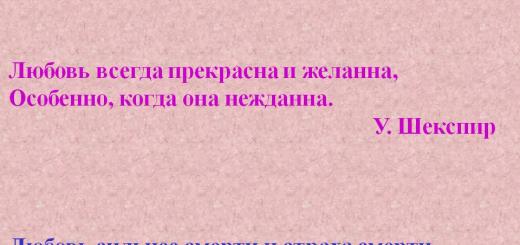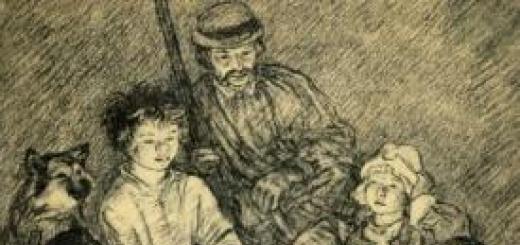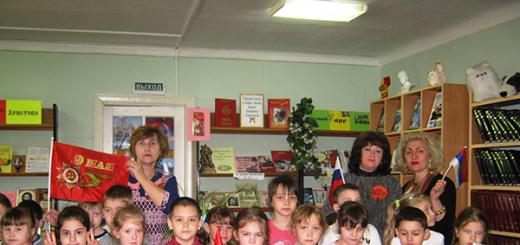Old Believers are a set of certain religious movements formed as a result of the Schism of the Russian Orthodox Church, which occurred in 1650-1660. The reason was the reform carried out by Patriarch Nikon and Tsar Alexei Mikhailovich. In Russia, the goal was then set to unify the conduct of rituals with the Greek tradition. Certain changes were also organized in relation to the existing ranks, and the foundation was created for state intervention in church affairs. Since some believers refused to accept the new rules, declaring only the old faith to be true, it soon became known as the “Old Believers.” This term itself indicates the importance of customs and traditions in the resulting conflict.
It should be noted that the Old Believers movement began to split quite quickly. In particular, the existence of several directions is officially recognized - bespopovsky (its representatives are also known as “bezpopovtsy”, but this is an erroneous spelling) and, in fact, priestly. The differences between them lie in the absence or presence of the priesthood. Thus, the first believe that after Nikon’s reform “real ordination” was not carried out. Consequently, temples and most rituals and sacraments are not recognized by them. There is a small organization in Poland. The second group is more represented in Russia; it has an internal structure.
The concept of co-religionists is also encountered. They have preserved prayers and culture in general, recognized as Old Believers, but at the same time they are subject to the jurisdiction of the Moscow Patriarchate. Many of those who did not accept Nikon's reform considered them traitors. Breakaways.
It is worth noting that despite the fact that the Schism itself is already a matter of history, confusion with concepts still often occurs. In short, those who did not accept the reform began to be called Old Believers, chronologically earlier. And the term “Old Believers” itself was decided to be introduced diplomatically (for its time) by Catherine II. She condemned the actions of Patriarch Nikon, blaming him for what happened. In addition, the empress believed that this part of the believers would be useful in the development of certain lands. As a result, she stopped persecuting the Old Believers and even provided them with some benefits, however, on the condition that they lived in sparsely populated and remote territories.
This term was finally consolidated by Nicholas II, who decided to grant freedom of religion. In his opinion, the persecution of fugitive Old Believers in Russia had to be ended. It is worth noting that the Old Believers themselves did not accept such a definition for a long time. They considered themselves “true Orthodox”, and those who accepted the reform – Nikonians. So the above concepts may be practically the same; it all depends on who exactly put into them and what. However, the issue of terminology itself periodically becomes fundamental. Especially considering the fact that today few of the uninitiated understand such moments.
How do Old Believers differ from Orthodox Christians?
There is a certain difference, which has only intensified since the reform, because development has taken place in different directions. So, the most famous is the use of two fingers (two-fingered version) when making the sign of the cross, rather than three. In addition, icons of the Old Believers are still made according to strict canons that existed even before Nikon. And if you listen carefully to the text of the prayer, you will find out that the word “Jesus” is pronounced here when speaking about the Savior, and not “Jesus.” The addition of the letter was done to make the pronunciation closer to the Greek version.
The cross is also different. Among Old Believers it is exclusively eight-pointed, while among Orthodox Christians it can be either four- or six-pointed. The inscriptions on the reverse side also vary. In addition, the Old Believers preserved the custom of wearing crosses on the body only without the image of the Son of God on it. Orthodox Christians march in procession against the sun, and Old Believers march in the direction of the sun. However, the Bespopovsky Old Believers generally abandoned this, as well as most everything connected with churches.
There is a certain difference between how many beads there should be on a rosary. The Orthodox have 33, those who adhere to the old faith have 109. The form has also changed, not just the quantity. The Orthodox also bow from the waist, and the Old Believers bow to the ground. There is also specificity in how Baptism is carried out. For breakaways, it involves complete immersion. The Old Believers in the Urals also adhered to this, even in the cold season. The prayers have undergone fewer changes, not only in relation to the name of the Son of God, but also in the text.
Household features
Everyday life also has its own specifics. Men do not shave, but grow a beard. Women do not cut their hair, they do hairstyles for long hair, mostly different braids. Be sure to learn prayers with children, often by heart. In general, much attention is paid to the religious side of education. They try to preserve what is left of their grandfathers and great-grandfathers: family stories, legends, albums, in a word, memory. Such things are considered very important, especially considering that these people are used to living out of suitcases, because persecution could begin at almost any time. Very often I had to literally drop everything and move to another place to start all over again.
But this approach made me greatly value community and family ties. Within the team itself, it is difficult to imagine that someone could simply leave. We are talking about our own closed universe. Which often helps to cope with even the most difficult tasks: Old Believers are known for their amazing adaptability and ability to establish a good life in places where not everyone can even survive.
Divine service

Everyone’s prayers are gathered in a special house, where those who come actively participate in the process. Since the majority are quite well versed in religious matters, there is no need to educate them on what and how to do. The Old Believers themselves consider this order to be their advantage: now even the patriarch does not tell them, they will figure everything out themselves. It is believed that the people (a specific community, for example) take responsibility. What frankly pleases many: there is no feeling of constant control.
And one more thing: if someone is sick, overworked, or very busy, then no one bothers you to pray at home. They won’t check because the relationship with God is considered sacred. But if the deception is revealed, then such a person risks losing the trust of the community.
Elders are held in high esteem, both in terms of age and relationship within the family. Deviation from such a rule implied not only the strictest church condemnation, but also social impact. Moral issues are resolved very strictly; there are no premarital intimate liberties, even between engaged couples. Although here a lot depends on which direction we are talking about. If we talk about the Bespopovtsy, then among them the marriage itself (in certain groups) was absent as such. Others decided to recognize as the conclusion of an alliance actions performed by civilians, that is, by the registry office in the present. As can be seen, there is no single point of view on this issue.
An interesting point with clothes: if the women's clothes were preserved, then with the men's clothes everything is complicated. Most often we are talking about something rather conventional, more stylized than truly ancient. It is very difficult to recreate what was worn almost 4 centuries ago. But you can notice a general trend: wide shirts, huge scarves on women, behind whom it is difficult to accurately determine even their height, not to mention their hair color.
Headdresses are often decorated with feathers of wild birds. Amber and all kinds of beaded jewelry, including complex multi-component ones, were used quite often. The belt played a special role in decoration: it not only supports clothing, but can also serve as a talisman. Old hats have also been preserved. It is worth noting that the Russian Empire also had a hand in such conservatism. Thus, Peter I pointed out that this category of the population does not need to abandon the previous fashion. Men had to wear a zipun; this became a distinctive feature, helping to identify an Old Believer even in a crowd. This is how the authorities fought tax evasion, because those who broke away, according to the law, had to pay more than everyone else.
It should be noted that the reforms aimed at introducing everything Western, by order of Peter I, did not affect the Old Believers. No one forced them to shave their beards and/or wear their old clothes. And since after the death of the emperor the era of palace coups began, they were safely forgotten for some time, right up to Catherine the Great. But she also did not interfere in everyday life, so here their own society, closed in many respects, was increasingly formed, separated from everyone else, living by its own rules.
Critics note that Old Believer daily life is characterized by strong, almost petty regulation of every little thing. A lot of things need to be done only in a certain way; innovation is not highly valued here. In general, Old Believers are inherently conservative. But certain trends of the new time still reach here.
Old Believers- group religious movements, united Russian Orthodox tradition, did not accept church reform 17th century Patriarch Nikon.
The mentioned reform is one of the most dramatic pages not only in history Russian Orthodox Church, but also in history Russia. The purpose of the reforms was unification of worship Russian Church with the Greek Church. As a result imposing new rules a church schism arose (until 1905, everyone who disagreed with the reform was called schismatics) - those who refused to perform new rituals brutally persecuted and were persecuted, in fact, society was on the threshold religious war. At this time it happened many mass suicides people who do not want to forcefully accept a new faith. The most common form of protest was self-immolation, only up to 1690 claimed the lives of about 20 thousand people.
Changes carried out through the Nikonian reform concerned external ritual parties. For example, replacing double finger sign of the cross on tripartite, shift directions of the religious procession(against the sun, not salting), etc. Also, many corrections were made regarding editing texts of the Holy Scriptures and liturgical books, related to spelling variations, minor adjustments that do not change the overall meaning. For outsider all these changes may seem completely not fundamental and not affecting the essence of Orthodoxy, but in the 17th century this led to a tragic split in the church and society, which finally has not yet been eradicated.
And now, despite numerous steps towards reconciliation, the relationship between the Old Believers and the Russian Orthodox Church is different complexity. For example, Old Believers consider themselves true Orthodox, and the Russian Orthodox Church is called heterodox church. That's why for the transition of new believers to the Old Believers is required either simply anointing(possibly even with retention of clergy), or even baptism. For today
The Old Believers have many varieties and subvarieties. But the main division is priests and non-priests.
Popovtsy- is the most numerous currents. Their distinctive feature is the recognition of the need for priests in conducting services and rituals. At the same time, some priests accept acceptance of priests from the New Believers Church. It is also typical for them participation in church life of the laity, along with the priests. Priesthood became most widespread in Nizhny Novgorod region, Don region, Chernigov region, Starodubye. From a dogmatic point of view, the priests are practically no different from the New Ritual Church, except that they adhere to pre-Nikonian rites and liturgical books. Today the number of priests is estimated at 1.5 million people, while their main centers in Russia are Moscow and Rostov regions.
Bespovostvo(another name is ancient Orthodoxy) has more radical differences from the New Believers. Died in 1654 without leaving the receiver, the only one Old Believer bishop. According to church dogma, only bishop has the right to dedicate to the clergy. Thus, formally following canonical rules, after the death of all pre-Nikonian priests, the Old Believers were forced to form priestless sense. Bespopovtsy, fleeing persecution, settled in wild and uninhabited places- one of which was the shore of the White Sea (that’s why this community was called Pomors). Number of bespopovtsy estimated at half a million people.
The Old Believers played a big role in preserving Orthodox cultural heritage. This applies to both church hymn(unique features of the singing style - absence of pauses, continuity and uniformity of sound), and the famous Old Believer icon painting based on tradition Russian and Byzantine schools. After the 19th century in the official Russian Orthodox Church iconography ended up in complete oblivion, Old Believer icon painters remained the only guardians of tradition, which allowed "reopen the icon" at the turn of the 19th and 20th centuries.
Contrary to popular belief, despite repressive measures by the government, Old Believers was very common- almost in the 19th century third of the population adhered to Old Believer traditions. Played an important role in the economy Old Believer merchants, which became the pillar of development entrepreneurship. This was justified by those cultivated in the Old Believer environment traditions- ban on smoking and alcohol, loyalty to your word, hard work.
20th century was the same for the Old Believers tragic, as well as for the Russian Orthodox Church. If after the revolution 1905 Old Believers received some relaxations- the right to organize processions of the cross, have bells ringing, etc. - then when Soviet power their brutally repressed on a par with the New Believers.
The Old Believers are rightfully just as important and significant direction Orthodoxy as well as the New Believers, having played an invaluable role in preservation and development of Russian cultural and religious traditions, as well as in socio-economic life of Russia.
(1645-1676). The reform consisted of correcting liturgical books and some changes in rituals according to the Greek model. For example, as a result of the reform, the two-fingered folding of the fingers when making the sign of the cross was replaced by a three-fingered one, the double exclamation of “Hallelujah” was replaced by a triple one, walking “on the sun” around the baptismal font was replaced by walking against the sun, and the spelling of the name Jesus by Jesus.
The Local Council of the Russian Orthodox Church, held in the year, recognized the wrongness of the Moscow Council of 1656 and the Great Moscow Council of 1667, which “legitimized” the schism. The anathemas against adherents of the old rituals pronounced at these councils were recognized as “not former”, and the old rituals themselves were recognized as equal in honor to those accepted in the Russian Orthodox Church. It should be remembered that rituals taken individually are not at all saving.
According to rough estimates, there are about two million followers of the Old Believers.
The history of the Old Believers is one of the most tragic pages in the history of not only the Russian Church, but also the entire Russian people. The hasty reform of Patriarch Nikon divided the Russian people into two irreconcilable camps and led to the apostasy of millions of believing compatriots from the Church. The schism divided the Russian people into two classes according to the most important sign of religious faith for a Russian person. For more than two centuries, people who sincerely considered themselves Orthodox experienced distrust and enmity towards each other and did not want any communication.
A special role in the Old Believers is played by the preservation of old traditions and rituals, thanks to which many elements of Old Russian culture were preserved: singing, spiritual poems, speech tradition, icons, handwritten and early printed books, utensils, vestments, etc.
Literature
- Old Believers in pre-revolutionary Russia (a unique collection of photographs from the early 20th century)
Materials used
- Priest Mikhail Vorobyov, rector of the Holy Cross Church in Volsk. Answer to the question “about the irreconcilable attitude of representatives of the Drevlyan Pomeranian Church towards the Russian Orthodox Church” // Portal of the Saratov diocese
More than three centuries have passed since the church schism of the 17th century, and most people still do not know how the Old Believers differ from Orthodox Christians. Let's figure it out.
Terminology
The distinction between the concepts of “Old Believers” and “Orthodox Church” is quite arbitrary. The Old Believers themselves admit that their faith is Orthodox, and the Russian Orthodox Church is called New Believers or Nikoninans.
In the Old Believer literature of the 17th - first half of the 19th centuries, the term “Old Believer” was not used.
Old Believers called themselves differently. Old Believers, Old Orthodox Christians...The terms “orthodoxy” and “true Orthodoxy” were also used.
In the writings of Old Believer teachers of the 19th century, the term “true Orthodox Church” was often used.
The term “Old Believers” became widespread only towards the end of the 19th century. At the same time, Old Believers of different consents mutually denied each other’s Orthodoxy and, strictly speaking, for them the term “Old Believers” united, on a secondary ritual basis, religious communities deprived of church-religious unity.
Fingers
It is well known that during the schism the two-finger sign of the cross was changed to three-finger. Two fingers are a symbol of the two Hypostases of the Savior (true God and true man), three fingers are a symbol of the Holy Trinity.
The three-finger sign was adopted by the Ecumenical Orthodox Church, which by that time consisted of a dozen independent Autocephalous Churches, after the preserved bodies of the martyrs-confessors of Christianity of the first centuries with folded fingers of the three-finger Sign of the Cross were found in the Roman catacombs. There are similar examples of the discovery of the relics of saints of the Kiev Pechersk Lavra.
 Vasily Surikov, “Boyaryna Morozova” 1887
Vasily Surikov, “Boyaryna Morozova” 1887 It’s not for nothing that I attached to the article this particular work by the artist Surikov, where the character, Boyarina Morozova, demonstrates “two fingers.” A little about the picture itself:
"Boyaryna Morozova"- a gigantic (304 by 586 cm) painting by Vasily Surikov, depicting a scene from the history of the church schism in the 17th century. After its debut at the 15th traveling exhibition in 1887, it was purchased for 25 thousand rubles for the Tretyakov Gallery, where it remains one of the main exhibits.
Surikov’s interest in the topic of Old Believers is associated with his Siberian childhood. In Siberia, where there were many Old Believers, handwritten “lives” of the martyrs of the Old Believer movement, including “The Tale of Boyarina Morozova,” became widespread.
The image of the noblewoman was copied from an Old Believers whom the artist met at the Rogozhskoe cemetery. And the prototype was the artist’s aunt, Avdotya Vasilievna Torgoshina.
The portrait sketch was painted in just two hours. Before this, the artist for a long time could not find a suitable face - bloodless, fanatical, corresponding to the famous description of Habakkuk: “The fingers of your hands are subtle, your eyes are lightning fast, and you rush at your enemies like a lion.”

The figure of the noblewoman on the sliding sledge is a single compositional center around which representatives of the street crowd are grouped, reacting differently to her fanatical readiness to follow her convictions to the end. For some, a woman’s fanaticism evokes hatred, mockery or irony, but the majority look at her with sympathy. A hand raised high in a symbolic gesture is like a farewell to old Russia, to which these people belong.
Agreements and rumors
The Old Believers are far from homogeneous. There are several dozen agreements and even more Old Believer rumors. There is even a saying: “No matter what a man is, no matter what a woman is, there is agreement.” There are three main “wings” of the Old Believers: priests, non-priests and co-religionists.

Name of Jesus
During the Nikon reform, the tradition of writing the name “Jesus” was changed. The double sound “and” began to convey the duration, the “drawn-out” sound of the first sound, which in the Greek language is indicated by a special sign, which has no analogue in the Slavic language, therefore the pronunciation of “Jesus” is more consistent with the Universal practice of sounding the Savior. However, the Old Believer version is closer to the Greek source.

Differences in the Creed
During the “book reform” of the Nikon reform, changes were made to the Creed: the conjunction-opposition “a” was removed in the words about the Son of God “born, not made.”
From the semantic opposition of properties, a simple enumeration was thus obtained: “begotten, not created.”
The Old Believers sharply opposed the arbitrariness in the presentation of dogmas and were ready to suffer and die “for a single az” (that is, for one letter “a”).
In total, about 10 changes were made to the Creed, which was the main dogmatic difference between the Old Believers and the Nikonians.
Towards the sun
By the middle of the 17th century, a universal custom had been established in the Russian Church to perform a procession of the cross. The church reform of Patriarch Nikon unified all rituals according to Greek models, but the innovations were not accepted by the Old Believers. As a result, the New Believers perform the anti-salting movement during the religious processions, and the Old Believers perform the anti-salting religious processions.
∗ Salting is a movement across the sun that helps increase vitality and accelerate spiritual evolution.

Ties and sleeves
In some Old Believer churches, in memory of the executions during the Schism, it is forbidden to come to services with rolled up sleeves and ties. Rolled up sleeves are associated there with executioners, and ties with gallows.
Question of the cross
Old Believers recognize only the eight-pointed cross, while after Nikon’s reform in Orthodoxy four and six-pointed crosses were recognized as equally honorable. On the crucifixion tablet of the Old Believers it is usually written not I.N.C.I., but “King of Glory.” Old Believers do not have an image of Christ on their body crosses, since it is believed that this is a person’s personal cross.

A deep and blatant Hallelujah
During Nikon's reforms, the pronounced (that is, double) pronunciation of “halleluia” was replaced by a triple (that is, triple). Instead of “Alleluia, alleluia, glory to you, God,” they began to say “Alleluia, alleluia, alleluia, glory to you, God.”
According to New Believers, the triple utterance of alleluia symbolizes the dogma of the Holy Trinity.
However, Old Believers argue that the strict pronunciation together with “glory to Thee, O God” is already a glorification of the Trinity, since the words “glory to Thee, O God” are one of the translations into the Slavic language of the Hebrew word Alleluia (“praise God”).

Bows at the service
At services in Old Believer churches, a strict system of bows has been developed; replacing prostrations with bows from the waist is prohibited. There are four types of bows: “regular” - bow to the chest or to the navel; “medium” - in the waist; small bow to the ground - “throwing” (not from the verb “throwing”, but from the Greek “metanoia” = repentance); great prostration (proskynesis).
Throwing was banned by Nikon in 1653. He sent out a “memory” to all Moscow churches, which said: “It is not appropriate to do throwing on your knees in church, but you should bow to your waist.”

Hands cross
During services in the Old Believer church, it is customary to fold your arms with a cross on your chest.
Beads
Orthodox and Old Believer rosaries are different. Orthodox rosaries can have a different number of beads, but most often rosaries with 33 beads are used, according to the number of earthly years of Christ’s life, or a multiple of 10 or 12.
In the Old Believers of almost all agreements, the lestovka* is actively used - a rosary in the form of a ribbon with 109 “beans” (“steps”), divided into unequal groups. Let us turn once again to Surikov’s painting:

∗ Lestovka — in the noblewoman's hand. Leather Old Believer rosary in the form of steps of a ladder - a symbol of spiritual ascent, hence the name. At the same time, the ladder is closed in a ring, which means unceasing prayer. Every Christian Old Believer should have his own ladder for prayer.
Full immersion baptism
Old Believers accept baptism only by complete threefold immersion, while in Orthodox churches baptism by pouring and partial immersion is allowed.
Monodic singing
After the split of the Orthodox Church, the Old Believers did not accept either the new polyphonic style of singing or the new system of musical notation. Kryuk singing (znamenny and demestvennoe) preserved by the Old Believers got its name from the way of recording a melody with special signs - “banners” or “hooks”.
Old Believers, also known as Old Believers, are adherents of the Orthodox movement in Russia. The movement of the Old Believers was forced, since Patriarch Nikon in the second half of the 17th century ordered church reform of the Russian Orthodox Church. The purpose of the reform: to bring all rituals, services and church books into conformity with Byzantine (Greek) ones. In the mid-50s of the 17th century, Patriarch Tikhon had the powerful support of Tsar Alexei Mikhailovich, who implemented the concept: Moscow - Third Rome. Therefore, Nikon’s church reforms should have fit perfectly into this idea. But, de facto, a split occurred in the Russian Orthodox Church.
This was a true tragedy, since some believers did not want to accept the church reform, which changed their way of life and idea of faith. This is how the Old Believers movement was born. People who disagreed with Nikon fled to remote corners of the country: mountains, forests, taiga wilderness - just to live according to their canons. There were often cases of self-immolation of believers of the old rite. Sometimes this happened to entire villages when official and church authorities tried to implement Nikon’s new ideas. According to the records of some chroniclers, the pictures appeared terrible: a large barn engulfed in flames, psalms rushing out of it, sung by dozens of people in the fire. Such was the willpower and fortitude of the Old Believers, who did not want changes, considering them to be from the evil one. Old Believers: difference from the Orthodox is a very serious topic that has been studied by some historians in the USSR.
One of these researchers in the 80s of the last century was Professor Boris Sitnikov, who taught at the Novosibirsk Pedagogical Institute. Every summer he and his students traveled to Old Believer villages in Siberia and collected interesting material.
Old Believers of Russia: difference from the Orthodox (main points)
Experts in church history count dozens of differences between the Old Believers and the Orthodox in matters of reading and interpreting the Bible, conducting church services, other rituals, everyday life and appearance. We also note that the Old Believers are heterogeneous. Among them, various movements stand out, which still add differences, but between the admirers of the old faith themselves. Pomeranians, Fedoseevites, Beglopopovtsy, Bespopovtsy, Popovtsy, Spasovsky sense, Netovshchina and many others. We will not tell everything in detail, as there is not enough space in one article. Let's take a brief look at the main differences and discrepancies between the Old Believers and the Orthodox.

1. How to be baptized correctly.
Nikon, during his reform of the church, forbade baptism according to the old custom with two fingers. Everyone was ordered to make the sign of the cross with three fingers. That is, to cross yourself in a new way: with three fingers folded into a pinch. The Old Believers did not accept this postulate, saw it as a fig (fig) and completely refused to cross themselves with three fingers. Old Believers still make the sign of the cross with two fingers.
2. Cross shape.
The Old Believers still accept the pre-reform form of the Orthodox cross. It has eight ends. To our usual cross, two small crossbars have been added at the top (straight) and at the bottom (oblique). True, according to some researchers, some Old Believers believers also recognize other forms of crosses.
3. Prostrations to the ground.
The Old Believers, unlike the Orthodox, recognize only bows to the ground, while the latter - bows from the waist.
4. Pectoral cross.
For the Old Believers, it is always an eight-pointed cross (as described above) inside a four-pointed one. The main difference is that there is never an image of the crucified Jesus Christ on this cross.
5. During worship, Old Believers keep their arms crossed on their chests, while Orthodox Christians lower their arms at their sides.
6. The name of Jesus Christ is spelled differently. There are discrepancies in some prayers. One scholar-historian counted at least 62 discrepancies in prayers.
7. Almost complete cessation of alcohol and smoking. In some Old Believer traditions, it was allowed to take three glasses of alcohol on major holidays, but no more.
8. Appearance.
In the Old Believer church, as in our Orthodox churches, you will not find girls and women with scarves on their heads, hats or scarves tied in a knot at the back. The woman is strictly wearing a headscarf, pinned under her chin. No bright or colored clothing is allowed. Men wear untucked old Russian shirts with a belt dividing the two parts of the body into the lower (dirty) and upper (spiritual). In everyday life, an Old Believer man is forbidden to shave his beard and wear a tie (the noose of Judas).
By the way, of all the Russian tsars, the Old Believers especially hated Peter the Great because he forced them to shave off their beards, took the Old Believers into the army, taught the people to smoke (the Old Believers had a saying: “The tobacconist is a clerk in hell”) and other things, according to the Old Believers, overseas devilish things. And Peter the Great really valued the soldiers who joined the army from the Old Believers. One interesting case is known. A new frigate was to be launched at the shipyard. Something wasn’t going well technically: either the log got stuck, or something else. The king, possessing powerful health and strong body, jumped up himself, grabbed a log, and helped solve the problem. Then he drew attention to a strong worker who worked for three and, without fear of the king, helped lift the log.
The king suggested comparing the silo. He says: “Here I will hit you in the chest, if you can stand on your feet, then I will allow you to hit me and you will have a royal gift.” Peter swung and hit the kid in the chest. Someone else would have probably flown about five meters head over heels. And he just swayed like an oak tree. The autocrat was surprised! Demanded a retaliatory strike. And the Old Believer struck! Everyone froze! And the guy was from the Old Believers of the Chud region. The king could barely stand it, swayed, and took a step away. The Emperor awarded such a hero a silver ruble and the position of corporal. Everything was explained simply: the Old Believers did not drink vodka, did not smoke tobacco, ate, as it is now fashionable to say, organic products and were distinguished by enviable health. Therefore, Peter I ordered young people from monasteries to be recruited into the army.

These were, are and remain the Old Believers, preserving their customs and traditions. Old Believers: difference from the Orthodox is indeed a very interesting topic, you can write a lot more about it. For example, we have not yet told you that in the houses of the Old Believers two sets of dishes were kept: for themselves and for strangers (guests). It was forbidden to eat from the same dishes with non-believers. Archpriest Avvakum was a very charismatic leader among the Old Believers. We recommend that everyone interested in this topic watch the Russian series “Raskol,” which tells in great detail about Nikon’s church reform and its consequences.
In conclusion, we will only add that the Russian Orthodox Church (Moscow Patriarchate) only in 1971 completely lifted the anathema from the Old Believers, and the confessions began to take steps towards each other.










